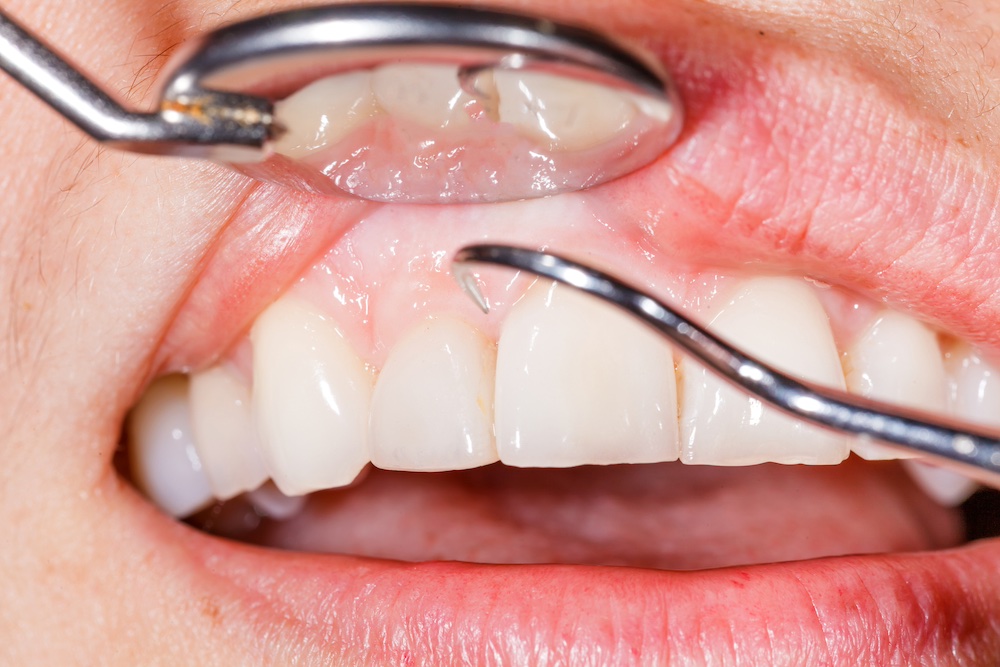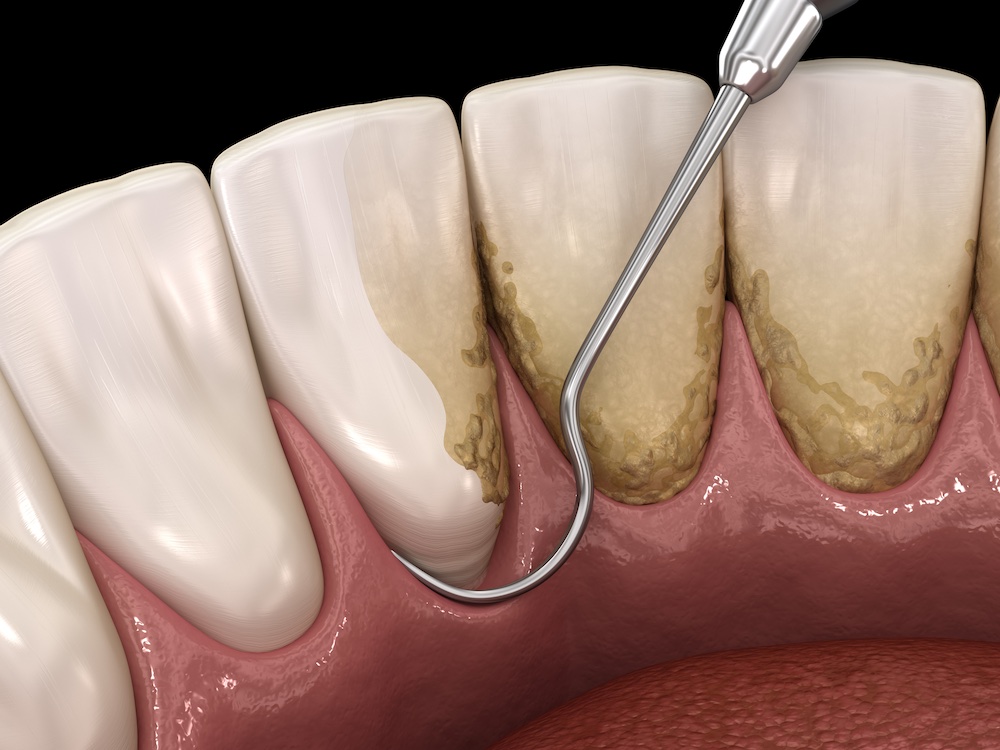Periodontitis is an advanced form of gum disease that is caused by a bacterial infection of the soft tissues surrounding the teeth. It can affect anyone with poor oral hygiene who fails to brush and floss regularly and can lead to tooth loss if left untreated. Periodontitis affects more than 47 percent of U.S. adults over the age of 30, and 70 percent of adults aged 65 and older.
A family history of gum disease can increase your risk of developing periodontitis. Other common risk factors include smoking, diabetes, hormonal changes from pregnancy or birth control, and medical conditions linked to inflammation such as arthritis and heart disease. Understanding these risk factors highlights the importance of regular dental checkups and professional cleanings to lower your chances of developing serious gum disease.
Stages of Periodontitis
Periodontitis is a progressive disease, meaning it advances to more serious levels when ignored.
There are four stages of periodontitis:
- Gingivitis – The earliest stage of the disease, the hallmark of gingivitis is red and swollen gums. Other symptoms include gums that bleed easily, especially when brushing, and sensitivity to hot or cold foods. You are not at risk of tooth loss at this stage, with gingivitis being reversible with proper oral care and regular cleanings with your dentist.
- Mild periodontitis –Periodontitis develops when gingivitis is left untreated, causing the gums to pull away from the teeth and form periodontal pockets. These pockets trap plaque, tartar, and harmful bacteria, making the condition worse since toothbrushes and floss cannot effectively clean these areas. Without professional treatment, the infection continues to progress, leading to more severe stages of gum disease.
- Moderate periodontitis – Bone loss around the teeth progresses, and bacteria continue to erode the soft tissue that keeps your teeth healthy and in place. Mild pain, including sore and tender gums, is common at this stage. Moderate periodontal disease is usually identified by a dentist measuring the pockets around the teeth.
- Severe periodontitis – At this stage, teeth begin to loosen and fall out. Bleeding gums are common, and infections along the gum line can lead to other oral health issues such as halitosis. Severe periodontitis can also start to impact overall health when the bacterial infection travels to the bloodstream, leaving you susceptible to heart disease, stroke, and other serious health complications.

Symptoms of Periodontitis
Periodontitis is a serious gum disease that often goes untreated, even though there are clear warning signs as it progresses. Healthy gums should be pink, firm, and fit snugly around each tooth. If you notice changes such as swelling, bleeding, or gums that begin to pull away from the teeth, it is important to schedule an evaluation with your dentist. Early treatment is key to stopping the progression of gum disease and protecting your oral health.
Signs of periodontitis include:
- Red or purple gums, instead of the usual pink
- Swollen or tender gums
- Gums that bleed easily
- Bad breath
- Visible infection around the gumline
- Loose teeth or tooth loss
- Gum recession
- Painful chewing
- New spaces between teeth
In order to diagnose periodontitis, a dentist will perform a visual examination to identify any signs of gum inflammation. They will then use a periodontal probe, which resembles a small ruler, to measure any pockets around your teeth. Dental X-rays may be taken to check for bone loss, and more advanced cases may be referred to a gum disease specialist, known as a periodontist.
Periodontitis Treatment

Treatment for periodontitis depends on how advanced the gum disease has become. In the early stages, dentists often recommend scaling and root planing, a deep cleaning procedure that removes plaque, tartar, and bacteria from beneath the gumline. This helps reduce inflammation and allows the gums to begin healing. In more advanced cases, pocket reduction surgery may be necessary. This procedure involves gently lifting the gum tissue, thoroughly cleaning the infected areas, and then securing the gums back in place to prevent further damage.
If you have questions about the stages of periodontitis or the treatment options available, contact our office to schedule a consultation.

